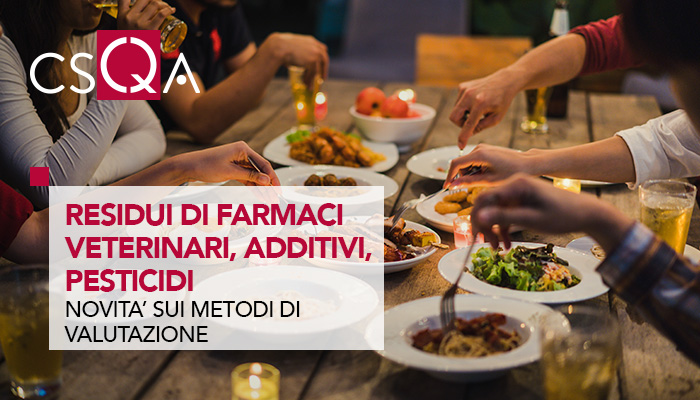
The European medicines (EMA) and food safety (EFSA) agencies have published the joint opinion Assessment of human dietary exposure to residues of veterinary medicines in the EU with the aim of standardizing the assessment of dietary exposure of residues, which today is diversified according to the substances.
Among the reasons that have made it necessary to update and standardize the approach to assessing exposure, there are also variations in the composition of the diet , from which different degrees of exposure (e.g. "acute" and "chronic") can derive for the consumer.
From the opinion of the Agencies, there are recommendations addressed to the European Commission aimed at modifying in a "significant" way - says a joint press release - the approach with which the Agencies evaluate the degree of exposure of people to residues of veterinary medicinal products present in foods of animal origin.
The presence of these residues is regulated to guarantee consumer safety through the definition of legally binding maximum residue limits (MRL), identified on the basis of assessments carried out by EFSA and EMA, on human dietary exposure. The changes to the exposure assessment methods are the consequence of the search for harmonized methodologies for all residues (eg feed additives and pesticides) and based more on scientific confirmation than on historical data.
The context
Some substances have a dual use as both veterinary medicines and pesticides. Maximum residue limits can be different and detected with equally different methods or dual-use substances for the same substance in the same animal raw material (muscle, fat, liver, kidney, egg or milk).
To remedy these discrepancies, which affect the assessment of dietary exposure, the European Commission, in 2020, had commissioned EFSA and EMA (in 2020) to produce a scientific opinion useful for developing a harmonized approach to exposure assessment methodologies for residues from veterinary medicinal products, feed additives and pesticide residues in food of animal origin. EFSA and EMA completed their relationship in December and it has been public since 19 January.
Next steps
The final report of the two European agencies is an important step towards harmonisation. The European Commission will evaluate its impact in different sectors through a series of follow-up actions over the next few years.
For veterinary medicinal products in particular, the implementation of the recommendations will represent a very significant change in the way dietary exposure is assessed.
Meanwhile, the favorable opinion of the European Committee for Veterinary Medicines (Cvmp) has already arrived on the report of the Agencies. (Source: https://www.anmvioggi.it/ )
Home
Corporate
Communication
News
Residues of veterinary drugs, additives and pesticides in food: towards the harmonization of val
Residues of veterinary drugs, additives and pesticides in food: towards harmonization of assessment
